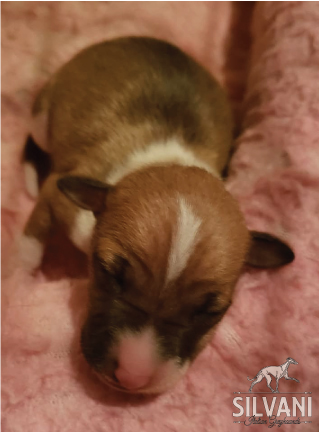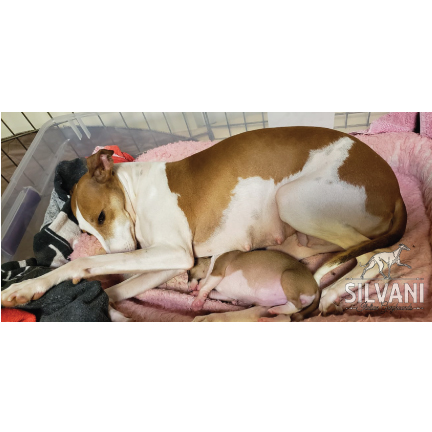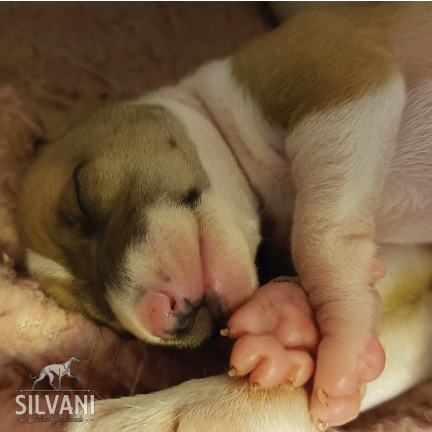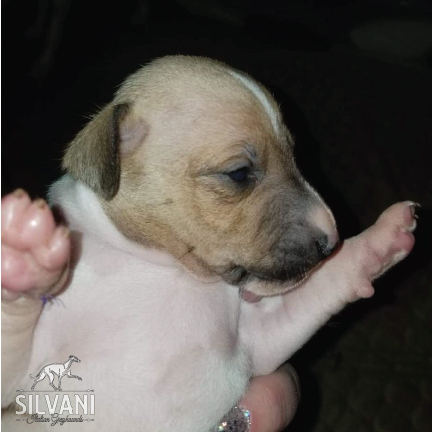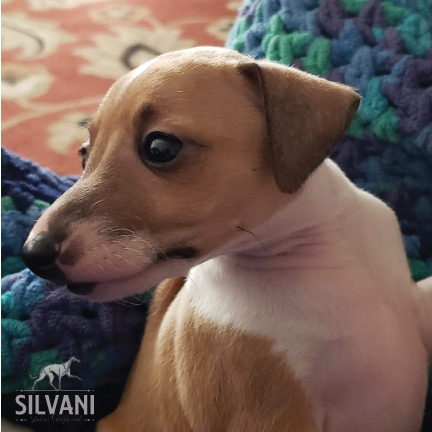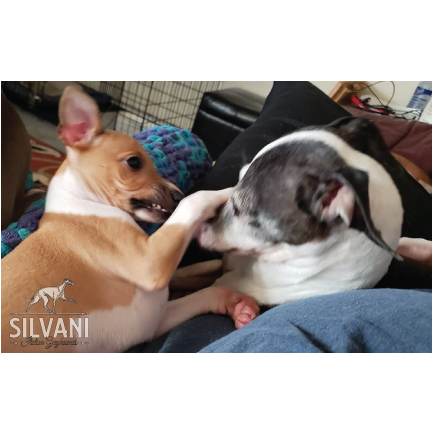Voici Silvani Nature’s Wild Faery Dancer
Pixie was Kai’s only progeny. We’d found that he had a rare haplotype that we’re trying to preserve in the breed, so we bred him even though he was 12 years old. Layle and I chose her Rose to be the momma. She was structurally sound, something Kai lacked, and was a good match genetically with him. Pixie was the only pup in the litter, but she was everything we’d hoped for! She had her mother’s structure and her father’s size, smarts, and attitude. We had such high hopes for this little girl but, sadly, Pixie passed away at only 5 months old.
One afternoon, she started acting lethargic and wouldn’t eat. We weren’t too worried, since she did that every time she was about to lose another tooth, so I just snuggled her and made sure she stayed hydrated. The next morning, however, we knew something was seriously wrong. She is one of those dogs who always use their potty pads; she hated a messy crate! So when we found her sprawled awkwardly in her bed, covered with pee, we immediately checked for other symptoms. One side of her body (legs and ear) was rigid, her eyes weren’t tracking properly, and she screamed in pain if she moved. We rushed her to the emergency vet, who told us she had a ear infection, gave us some meds for her, and sent us home. I was furious! Her paperwork said she was ambulatory, yet one whole side of her body was rigid! This was definitely something more serious.
Instead of just going back home, I took her over to Layle’s house (her co-breeder, co-owner, and a vet). She and her husband (also a vet) agreed with me. By this time, Pixie couldn’t stand at all and, while still responsive, but was obviously in a lot of pain. We thought it was encephalitis, and began treating for that. (Other vets were also consulted and that was the consensus.) Soon she wasn’t responding except to scream in pain. We did everything we could to make her comfortable, but everything we tried only worked for an hour at most. We were preparing ourselves to let her go, when she stopped breathing.
She died curled up next to me, and I hope she knew I was there and that it comforted her.
We did a CT scan with contrast on her and found that she had an abscess in her brain stem that hemorrhaged. This was later confirmed with a necropsy.
I was beyond shocked and devastated. Less than 24 hours after her first symptoms, she was gone. This was a freak accident kind of thing, nothing I could’ve done or not done would have changed anything, but that only slightly mitigated my grief.
One ray of sunlight in the dark time was that with the special contrast used during the scan, the necropsy, and multiple vets documenting what had happened to her, there’s a chance that her death can help others! After consulting with vets across the country, including ones with over 40 years of experience, the vets realized that they’d all had patients who’d mysteriously died suddenly after showing similar symptoms. Now, if those vets every see the same symptoms again, they can immediately begin treatment and hopefully save lives!
